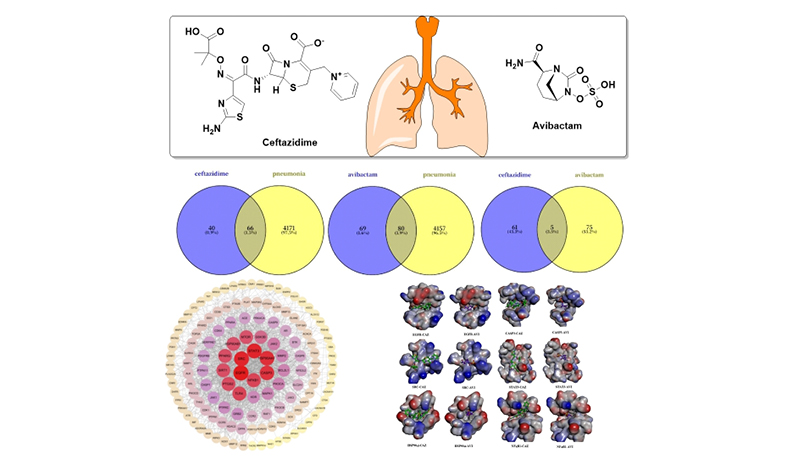New Insights into CAZ-AVI’s Pharmacological Mechanisms: Network Pharmacology and Molecular Docking Reveal Molecular Targets in Pneumonia Treatment
DOI:
https://doi.org/10.17344/acsi.2025.9492Abstract
Ceftazidime-Avibactam (CAZ-AVI) has demonstrated good efficacy in treating pneumonia. Currently, research on CAZ-AVI is primarily focused on its direct antibacterial effects, while exploration of its potential host targets remains relatively limited. In light of this, our study innovatively employs a research strategy that integrates network pharmacology and computer-aided drug design to systematically explore the potential host targets of CAZ-AVI. We identified 141 intersecting targets in CAZ-AVI-treated pneumonia, with key targets including Epidermal Growth Factor Receptor (EGFR), Src Proto-Oncogene (SRC), Signal Transducer and Activator of Transcription 3 (STAT3), Heat Shock Protein 90 Alpha Family Class A Member 1 (HSP90AA1), Caspase 3 (CASP3) and Nuclear Factor Kappa B Subunit 1 (NFKB1). By inhibiting or activating these target proteins, CAZ-AVI plays a significant regulatory role in cell proliferation, apoptosis, signal transduction, and immune responses. Our experimental results further confirmed that the compound possesses activities in inhibiting cell proliferation and promoting apoptosis. CAZ-AVI can correct cellular dysfunction and optimize immune responses, thereby providing new strategies and insights for the treatment of pneumonia.

Downloads
Published
Issue
Section
License
Copyright (c) 2025 Kun Zhang, Yu-Qian Cheng, Cun-Jin Wu

This work is licensed under a Creative Commons Attribution 4.0 International License.
Except where otherwise noted, articles in this journal are published under the Creative Commons Attribution 4.0 International License
